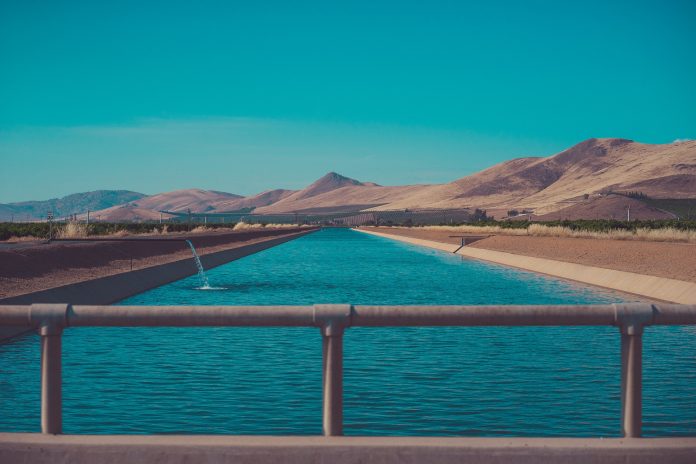As the world’s infrastructure leaders come together on Friday, we look at three reports they should read if they want to solve global water problems.
As climate change starts to bite, the number of places facing acute water problems is rising even while billions already suffer from lack of clean water and sanitation. Fortunately, 2021 has seen a remarkable new focus on water with international organisations producing research and proposing new ways of thinking when it comes to the world’s most precious resource.
From attempting to revalue water to reflect its true importance, to proposing solutions that deal with specific problems, three reports in combination form a ‘must read’ for politicians, engineers and investors if they want to meet global water challenges.
The misaligned value of water
In March of this year, UN Water warned that the globally inconsistent approach to water value meant the world was now facing a 40% water deficit by 2030.
At its heart, the report examined how water is valued and why a failure to do it properly has resulted in poor planning of water infrastructure investment. It stressed that most methods of valuing water infrastructure still centre on a cost-benefit approach that fails to account for a range of benefits and costs and even under or overestimates many of those accounted for.
The report went as far as to propose the development of a more comprehensive approach – one that includes more of the often missing social, economic and environmental costs and benefits. This would better target investment and support a genuine case for projects that are most needed across the world.
Just as importantly, continuing to fail will come at a high price. The UN secretary-general António Guterres explained: “We are not on track to ensure everyone has access to water and sanitation by 2030, as set out in sustainable development goal 6. While advances are being made, current progress needs to quadruple to achieve universal access.”
UN Water: World Water Development Report: Valuing Water
Policy opportunities that cut across sectors
In the spring, the European Bank for Reconstruction and Development (EBRD) issued a report focusing on the sustainability or lack of it across global urban environments.
The report addressed all aspects of urban policy, reflecting the whole of the bank’s Green Cities programme. That meant it held particular value for those focused on water stress as it drew valuable lines between sectors and policy areas within city administrations. For example, it addressed pollution of groundwater by the solid waste sector, and it set out the need for policies that improve planning, accountability, funding and the formalisation of informal waste-collection services – all to improve water availability and cleanliness.
At the same time, it addressed the water sector itself, warning that overuse of water alongside rapidly growing climatic stresses required specific policy reforms. These include strengthening the position of water utilities and spurring greater investment, in part through better pricing signals and regulation by city governments.
In the foreword to the report, Elisabetta Falcetti, the EBRD’s director of sector economics and policy, explained that sustainable investments need the right policy-backing to achieve their potential, saying: “While investments in sustainable infrastructure are crucial, complementary policy reforms also play a vital role in helping to achieve systemic impact. However, through our work with EBRD Green Cities, we have noticed the lack of a cross-sectoral overview of green urban policy options that could guide municipal authorities and relevant stakeholders in the selection, design and implementation of effective policies.”
EBRD: Effective policy options for green cities
Examining what actually works
Perhaps the most comprehensive look at the global water situation – covering everything from shortages and freshwater pollution to plastic waste at sea and the growing problem of biodiversity damage – was the second water-focused report of the year from international engineering federation, FIDIC.
Building on its earlier report entitled “The business case for change”, the second report in the series set out a strategic overview of the myriad of problems that water infrastructure must address and then looked at the projects and available solutions that can be learned from and replicated.
The report highlights a range of projects around the world that address rising water use, shortages and pollution, while also setting out what can be achieved through better recognition of nature-based solutions and more integrated planning. Perhaps most crucially, it details the potential for replacing project-by-project decision-making with a comprehensive risk and prioritisation system to target investment and talent where it is most needed.
In the report, Stuart Orr, freshwater practice leader at WWF International, said: “There is now a growing – but still not sufficiently realised – appreciation for the value of nature and natural systems in addressing these challenges. Increasingly, opportunities to protect, preserve and enhance aquatic and freshwater ecosystems, sustain livelihoods and meet the nutritional needs of a growing and changing population, will likely drive new financing and investment, enhance governance strategies for managing shared resources and bring new technologies to arrest and reverse the loss of nature and build a carbon-neutral and nature-positive economy and society.”
FIDIC: Tackling the global water crisis
The Global Infrastructure Conference brings together global infrastructure leaders each year to discuss the world’s biggest challenges and how they might be addressed. Taking place on Friday 10th and Monday 13th of September, IG will be there to report on all the news that emerges.


















